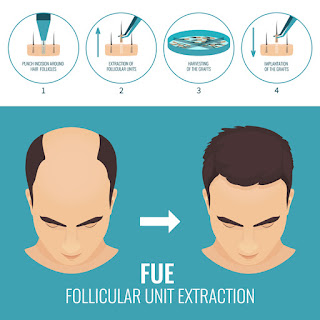Understanding Hair Loss for Hair Transplant Surgery
Hair Transplant Surgery
When it comes to researching and considering having hair restoration surgery, it's a subject that all hair loss sufferers should be taking seriously. And chances are, if you're one of those who are researching your options, you do indeed.
With all the Internet has to offer, the one thing for certain is "options". So many to choose from, it makes the task seem almost like work. And it is. But putting in the time and effort, if only for a short while of 30 days straight (which is nothing to those almost obsessed with having a hair transplant) will pay off in the end. Hey, you're the one that will be living with the results... it's worth the time.
So 'thank you' for taking the time here and reading this Q&A article.
What kind of surgery is available for helping me with my hair loss?
Currently, there are two options available that meet my criteria of yielding "Satisfactory" to "Excellent" in regards to end results. Between the two, one has clearly set itself apart from the other in terms of maximum follicular units extracted and transplanted, overall costs and with 98% growth guarantee.
That stated, the "lesser method" does have it's placed and in that respect yields, excellent results for it's the best application.
The best option for getting the most possible grafts, meaning anywhere in the 3,500 to 6,000 follicular units (or more) in one session is what is referred to as "FUG", meaning Follicular Unit Grafting or "The Strip Method" as it is most commonly known by those on the forums.
FUG works by removing a strip of the scalp from the DHT-resistant zones that are genetically programmed to grow wherever they are placed. With the right amount of scalp-elasticity and with the right exercises, as seen on our website, those characteristics alone can make a big difference. Because the more stretchy your scalp is, the more the surgeon can harvest in the strip. That is if you're trying to go for the "mega-session". The scalp is held together usually by staples, and those will simply start to loosen by day 10-14 and will be easily removable. The FUG process leaves a thin and usually undetectable scar from ear to ear. The right surgeon will take great consideration in using the latest techniques that practically leave the scar virtually invisible. The fact remains that there is some kind of scar since we're talking about surgery. But the scar closing technique should be a factor in choosing the right doctor. All in all, FUG offers the largest options that can take a Norwood 6+ and revert that person, taking into consideration certain characteristics, into looking as if he has a full head of hair.
Now the lesser of the two is that way due to the inability of the technique to yield the high numbers that a strip could. That stated, FUE meaning Follicular Unit Extraction, or punch grafting as it is known on the forums, has it's placed and in those cases is the most logical option. It is basically instead of removing a long strip, the hairs from the sides and the back of the head individually removed in their groupings of one to four hairs. A specific tool is used by the surgeon to create about a 1mm incision and the follicles are removed with forceps. Scarring can be in some cases virtually undetectable, but understand that there will be scars. That's plural, small as they are... this is surgery. When you're only in need of 2,000 or 3,000 follicular units, for focused or smaller areas ie; temple points, sideburns, facial hair, eyebrows, female balding "spots", etc... you get the point. FUE is best served for those "smaller sessions", rather than trying to fill the whole head. In that, FUE offers the best option in those smaller sessions, healing time and finished cosmetic results.
What should I consider in regards to making a decision to have a hair transplant surgery?
Consider the amount of money hair transplant cost in Delhi it will take to get you to your personal goal. Consider what your characteristics are as a potential hair transplant patient. Find out if you could possibly meet any of the former patients in person or online. If the company is open, honest and has nothing to hide then it shouldn't even be a problem. Consider finding a mentor. That could be someone on the forums or even your scalp hair transplant consultant. It helps to have somebody in your corner who has been where you are.
Does having a hair restoration hurt?
The only thing that is discomforting is the 4-6 pinpricks as the needle localizes the areas. After those brief 1 second stings, you feel nothing. But if you do feel discomfort, speak up and let them know so you can be free of any pain and enjoy the journey to more hair.
To learn more about hair loss and hair recovery, visit www.personahair.com or call 7838140100



Comments
Post a Comment